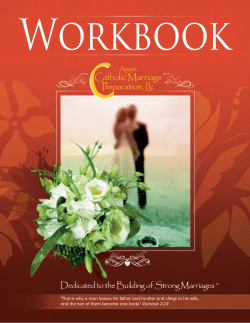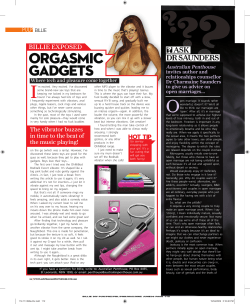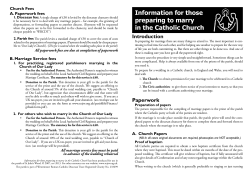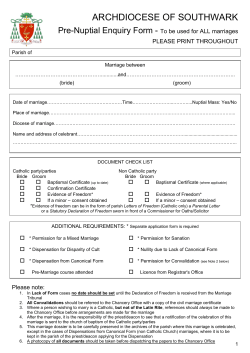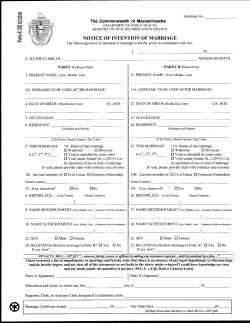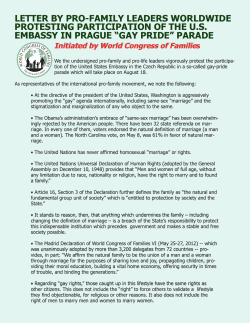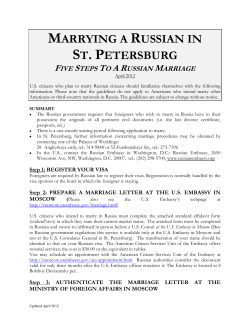
Document 35675
In 2004 the Oireachtas passed the Civil Registration Act, part of which dealt with the Registration of Marriages. The purpose of this Act was to have a single procedure for the notification and registration of marriages which would modernise and simplify the existing legislation. The following guidelines are designed to be read in conjunction with the Booklet issued by the General Register Office ‘Marriage Provisions of the Civil Registration Act, 2004: Notes for Religious Solemnisers’. The new civil requirements are outlined in that booklet. The following guidelines apply and insert these requirements into Church practice. Getting married in the Catholic Church – what is needed? The first thing a couple need to do is to contact the local parish clergy. The church where they wish to marry must be booked. The Pre-Nuptial Inquiry Forms should be completed, for which the following are required: baptism and confirmation certificates proof of freedom to marry marriage preparation certificate permissions and dispensations where applicable if either party has been previously married, it is essential that freedom to marry be established before any marriage arrangements are confirmed What changes are being made? There are no changes to the church requirements for couples getting married. However, some developments are taking place affecting the civil registration of marriage. 3 Getting Married In Church • • • • • When do the new practices come into effect? They become legal requirements on 5 November 2007. • • • • • photo identity (preferably a passport or driving license) names and dates of birth of witnesses name of the church where they wish to be married date of marriage name of the priest who will officiate at the marriage; this presumes that the celebrant is a registered solemniser and that he has agreed to officiate at the marriage • if either party has been previously married, they must provide the civil registrar with an original divorce decree or a death certificate if widowed What are the principAL changes in the new requirements? The 3 most important changes are: • the couple take greater responsibility for the civil registration of their marriage • the couple make a declaration of no civil impediment • priests* in order to officiate at a marriage, must be on the ‘List of Solemnisers’ submitted by each local Bishop to the Registrar-General 3. Without the Marriage Registration Form the couple cannot get married nor may the solemniser proceed with the marriage ceremony. FIRST CHANGE Couples take responsibility for civil registration 1. When the couple meet the priest in the parish, they should be made aware of their need to make an appointment to meet with any civil registrar in person to give notice of their intention to marry. This meeting must take place at least 3 months before the wedding in order to comply with the civil requirement. The couple will need to know that the church is available prior to this meeting. They also need to know the name of the priest who will solemnise the marriage. 2. The couple will be required to bring the following documentation to the registrar’s office: * priests or deacons 4 4. 5. 6. The solemniser and the parish priest of the place of marriage will receive a notification from the civil registrar’s office concerning the marriage due to take place. The couple must present the MRF to the solemniser before the wedding so that he can check that the details are correct before the marriage takes place. This should be done as early as is convenient. If changes are necessary – for instance, changing the name of the solemniser – the couple should be advised to contact the civil registrar to arrange for the re-issue of the MRF at the earliest possible stage before the ceremony. 5 Getting Married In Church Getting Married In Church The priest who officiates at a wedding is – from the perspective of civil law – known as the ‘Solemniser’ of the marriage. When all the civil requirements have been completed satisfactorily the couple will receive, from the registrar, a Marriage Registration Form (MRF). This document replaces the current form. Without this form the couple cannot get married nor may the solemniser proceed with the marriage ceremony. 7. 8. After the wedding, the solemniser must ensure that the MRF is signed by the couple, the two witnesses and himself. After the marriage has been celebrated, it is the responsibility of the couple (not the local priest or solemniser) to return the MRF to any Registrar’s Office. This form must be returned within one month of the marriage. The Marriage Registration Form must be returned by the couple within one month of the marriage. Verbal Declaration of No Civil Impediment 1. The solemniser must ask the couple to make a verbal declaration of no civil impediment. 2. This declaration should be made not more than two days before the wedding. 3. It is the recommended practice that this declaration be made at the beginning of the wedding, when the bride and groom arrive at the sanctuary. THIRD CHANGE 5. If a priest is not on the List of Solemnisers, and wishes to officiate at a marriage, he must become a temporary solemniser. He can do this by submitting a request to the Bishop of the place of marriage together with an appropriate Testimonial Letter signed by his Ordinary (i.e. Bishop or Provincial Superior). If the priest is incardinated into the diocese in which the marriage is to take place, he needs simply to request this from his Bishop. For the canonical validity of the marriage, a visiting solemniser will need to receive delegation as heretofore. Where can Catholic marriages take place? The proper and ordinary place of the celebration of a catholic marriage continues to be the parish church(es) (cann 1115 & 1118). All existing diocesan policies with regard to the place of marriage will remain the same; so too in relation to the time and day on which marriages can take place. The solemniser and the couple must comply with these diocesan regulations. If a solemniser does not comply with civil or church requirements, he can be removed from the List of Solemnisers. Where can I find more information? The information in this leaflet should be read in conjunction with the booklet issued by the General Register Office “Marriage Provisions of the Civil Registration Act, 2004: Notes for Religious Solemnisers”. Information may also be found at www.groireland.ie List of Solemnisers 1. The priest who officiates at the marriage is called the ‘solemniser’. 2. In order to officiate at a marriage priests must be on the ‘List of Solemnisers’ submitted by each local Bishop to the Registrar-General. 3. If the priest, whom the couple have chosen to officiate at their marriage, is not a priest of the parish, it is important for the local priest to make the couple aware that he must be a registered solemniser. 6 7 Getting Married In Church Getting Married In Church SECOND CHANGE 4. CHECK LIST What the solemniser needs to do: • • • • • • • make sure he is on the List of Solemnisers if he is not on the list, he must become a Temporary Solemniser ensure that the couple have received the Marriage Registration Form (MRF) before the wedding takes place check that all details on the MRF are correct make sure that the couple makes the verbal declaration of no civil impediment in the presence of the two witnesses and himself ensure that the MRF is signed by the couple, two witnesses and himself comply with all diocesan regulations regarding the time and place of marriage What the parish clergy need to do: • • • • complete the Pre-Nuptial Inquiry Forms in the usual manner inform the couple of the requirement to meet the civil registrar at least 3 months before the wedding to give notice of their intention to marry inform the couple that the priest they have chosen must be on the List of Solemnisers give delegation to the visiting solemniser as heretofore What the couple must do: • • • • • • • meet one of the local parish clergy book the church where they wish to marry meet a civil registrar at least 3 months before the wedding to give notice of their intention to marry receive the Marriage Registration Form (MRF) from the civil registrar bring the MRF to the solemniser make the verbal declaration of no civil impediment not more than 2 days beforehand return the signed MRF to any civil registrar not later than 1 month after the wedding I S B N 978-1-84730-072-0 9 781847 300720 www.veritas.ie
© Copyright 2025
